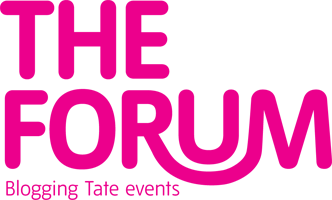It’s a building, it looks like a church… there’s a lot of orange - hot colours - and the brush strokes; there are big splodges of colour…'
A student discussing one of Piet Mondrian’s paintings using an anti-intentionalist approach
Nigel Warburton’s seven-week course at the Tate Modern is aptly titled Seven Ways of Thinking About Art and to get a feel for the course I’ve parachuted in for the second session Art as Intentional.
The class meets in the Seminar Room on Level 2 – a womb-like room with blood red walls – before the students put theory into practice through engaging with contemporary art in situ. I’ve already visited Nigel's website, downloaded the course outline and last week’s notes and am now looking forward to meeting the group of students. But what I don’t expect is to come face to face with a friend of a friend who also happens to have been at school with Nigel. London may be a metropolis with a population of 8 million but the six degrees of separation concept appears to be alive and kicking at the Tate. What’s more, during one of my thirst-for-knowledge phases, I signed up to the Open University’s A211 Philosophy and the Human Situation course where Nigel is a senior lecturer. He’s also the author of numerous books on philosophy and I met him briefly at a one-day seminar in 2000.
I must admit, it’s nice to walk in and discover that I already know someone. However, by the end of the hour and a half class, it would be hard not to make friends. The class is lively and the discussions are stimulating. If I wasn’t writing about the class, I’d be enrolling for it or suggesting that some of my friends enrol. With ages ranging from late 20s to early 60s and a good mix of men and women, with perhaps a slight skew towards women, it’s also a refreshing break from the demographics of formal day time education.
Tonight we take on art appreciation positions which meet each other head on. The Anti-Intentionalist approach championed by art critic Clive Bell in his book Art (1914) - he was married to painter Vanessa Bell, who was a member of the Bloomsbury Group and the sister of writer Virginia Woolf - versus the Intentionalists, for example, Richard Wollheim with a nod to Jerry Fodor’s Virtual Intentionalism. There’s no need to go into detail here as Nigel’s website has links which take you to comprehensive class notes, further explication and feedback. Through careful class management Nigel gets students into anti-intentionalist and intentionalist groups and we take our ideas into the After Impressionism room on Level 5, where we discuss the paintings, including Pierre Bonnard’s, The Bowl of Milk, circa 1919.
‘We looked at the harmonics of the colours, and the light and the form in terms of a series of verticals… the use of contrasting colours and how they work harmonically - the blue with the warm, mustardy ochre colour, they are opposites but they work together. We only noticed the cat about halfway through - we didn’t realize until we read the text that it was anything to do with the bowl of milk. Is it referring to the bowl of milk on the table or the one in her hand?’
Students’ feedback taking an anti-intentionalist approach
We wanted to know about the artist’s theories of painting and did s/he have any theories of colour? What kind of life did s/he live and was that significant in choosing a closed domestic interior? Did s/he train with anyone?
Students’ feedback considering some of the questions an intentionalist may ask
Having access to the collection out of hours is fun, as is the complimentary drink which is included in the price of the course and served after class in the Members' Room on the fifth floor. This is a chance to get to know the students and I find that they represent a broad sweep of people from those who have previously taken courses, such as art history degrees, to people working in the arts and those who want to extend their knowledge. As I head home, I think about how the reviews I write employ a mix of the extreme positions we have discussed tonight and how I dip in and out of them to take on what I can only call a pluralist approach. Next week, I’m taking part in the Physical Thinking class and have been warned to avoid wearing a dress or a skirt. I go to sleep with visions of us somersaulting through the Tate and down the chasm of Doris Salcedo’s site-specific work Shibboleth.
Monday, February 25, 2008
After Hours
Labels:
anti intentionalist,
art,
intentionalist,
painting
Subscribe to:
Post Comments (Atom)




No comments:
Post a Comment